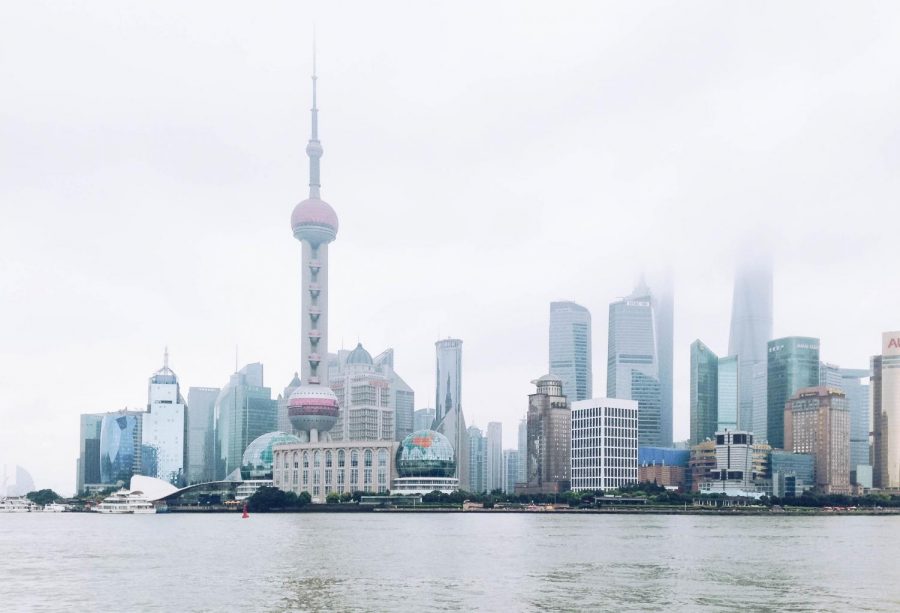Day in the Life: Shanghai
The Shanghai skyline on a foggy day.
February 20, 2018
Moving to Shanghai for the spring semester was my first real culture shock. I have never struggled so much to carry out basic tasks, such as finding the bathroom or even correctly pronouncing the word Shanghai. Despite some initial adjustment, studying abroad has been a fantastic experience so far, and I am beyond glad I took the leap of faith to come here.
A typical day at NYUSH starts at Jinqiao, the only residence hall available in the site. Jinqiao is a beautiful and spacious apartment complex with four towers. It is conveniently located in front of a massive shopping mall, Lifehub @ Jinqiao. It is nestled deep inside Pudong, a district east of the Huangpu River, which is distant from the flashy highrises of Puxi, a district situated west of the River. Sightseeing and exploring Shanghai’s nightlife can often prove to be a hassle because of this location — a cab ride between Jinqiao and Puxi can last more than 30 minutes.
Every morning, NYUSH sends an air quality update to students. Like many other Chinese cities, Shanghai has a big air pollution problem, so the NYUSH Health Center provides free air-filtering masks for students, though they are not as stylish as the brand-name ones that many locals wear. The air quality update is sent via WeChat, an all-in-one superapp that is used for practically everything here in Shanghai — messaging, booking restaurants, paying restaurant bills and playing games.
After a 20-minute bus ride in NYU provided shuttles, students arrive on campus. The campus consists of a modern 15-story building equipped with a dining hall, health center, gym and couches so comfortable that it’s common to see students taking post-class naps all over campus. Conveniently located just five minutes from campus is the Century Avenue subway station, which houses another immense shopping mall and dozens of restaurants. However, students usually order lunch through E.lema or Sherpas, the two leading food delivery apps in Shanghai. NYUSH’s campus is located roughly halfway between the Jinqiao residence halls and the downtown Puxi area, making it a convenient location to explore known landmarks after class.
NYUSH has rigorous academics and excellent professors. In my conversational Chinese course, students with little to no knowledge of the language are taught basic conversational tools. Although the class has a pre-kindergarten atmosphere with students learning how to string sentences together for the first time, there is still a demanding workload.
An interesting aspect of studying abroad in Shanghai has been meeting the NYUSH full-time students. NYUSH is a four year degree-granting campus and attracts many talented students from China and other countries. These full-time students have been welcoming to me and the rest of the study abroad students, making the transition sightly easier. Every once in a while you’ll have a BCD — short for Bad China Day, a common term which refers to how overwhelming adaptation to Chinese culture can be — but hearing some of the full-time students’ terrible BCD stories, you will likely feel less alone and hopefully a bit better.
Although I have only been here for three weeks, Shanghai has already been an adventure. The city is dynamic, and the academics are stimulating. For many students, myself included, studying abroad in Shanghai may seem daunting and too radical of a change. Shanghai was definitely not in my comfort zone; I had never been to Asia before, I spoke no Mandarin before coming here and I still have no idea how to correctly use chopsticks. But, as author Neale Donald Walsch once said, “life begins at the end of your comfort zone.” I hope more students consider the opportunity to study abroad in Shanghai and have the unique, fun and humbling experience that many of my peers and I are currently having.
Email Pablo Saud at [email protected].


























































































































































